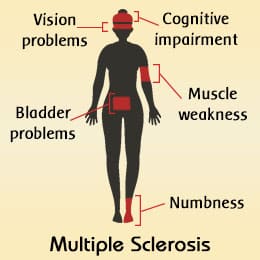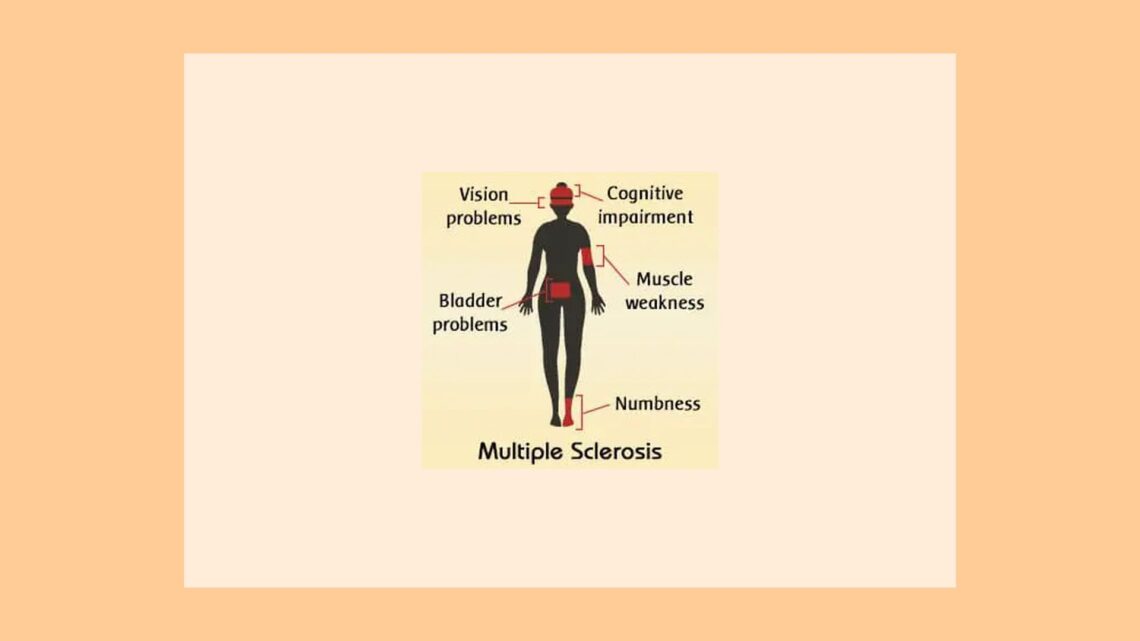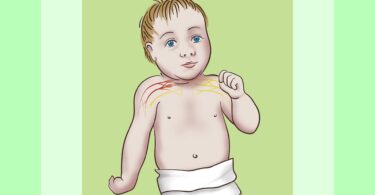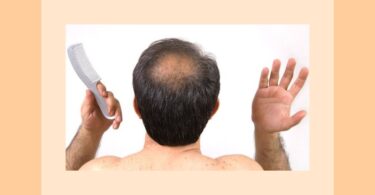1st visit: November 9, 2013

Since the beginning of the disease, she has had three attacks and each of them was different. The first flare up appeared after the night shift at work when she had the tingling of the left side of the body (see above). The next attack occurred two years later. She had a sensation of being pulled towards the right side. This disappeared after infusions. Then she had cramps in her left leg in the quadriceps muscle extending upwards to her left arm. This lasted for one and a half months and it was accompanied by sleeplessness. She used to get tired very soon in the evening; she tended to go to bed at 7 p.m. and to wake at 4 a.m. without being able to fall asleep again. Eight years later, in 2013, she had another attack, which occurred after an acute disease with fever over 38.5°C. She felt electric current in the left foot sole during that. Psychologically, she feels balanced and she neither suffers from increased irritability nor from depression or anxiety.
Investigation of the key information and analysis of the case:
In every case in homeopathy, it is very important for us to find out if there is anything particular, which preceded the development of the disease and what we can therefore identify as a causative (triggering) factor of the particular complaints, in other words, the etiology. Especially if the complaints started recently, the person can recall all the details concerning their development and depict their beginning and their preceding circumstances. With my first question, I aimed towards Cocculus indicus. Not only because of the diagnosis of multiple sclerosis and the feeling of the electricity in the body which is also typical for several other remedies, but particularly because I spotted the information saying that the first symptoms of the disease started after a night shift. Cocculus indicus not only combines different neurological complaints in its picture, but the specific etiology of long-lasting sleep deficiency is very typical for it. This often appears in people who work night shift. If we consider the combination of the sleep deficiency and the long-term anxiety about a close person to be the causative factor, we have an absolutely essential combination of symptoms leading to Cocculus . What is the most typical is the long-term care taking of a close person, which means a combination of sleep deficiency and worries about a close person. So my first question was following: “Was the development of the complaints preceded by a longer period of too little sleep?” She replied: “Before the complaints started, I had worked 24-hour shifts for 9 months and before that, occasional 24-hour shifts in hospital for 6 years. When I started working at a control center, I looked after my ill grandmother every day, even after the 24-hour shifts, and on the top of that, I went to school.” My second question was: “Did you worry a lot about your grandmother?” The answer was: “Yes, very much. I went to look after her every day.” Furthermore, I found out that she has left sided headaches once a month, but they are not regular. Sometimes she does not have them for the whole month. These headaches started after the first delivery. In the past year, she has often been ill (colds), but she has not had high fevers. Currently, she has fevers about 37.8°C. The last high fever appeared in 2013 (see above). In the evenings she tends to be very tired (3).
Depth of the disturbance:
The complaints appear only on the physical plane, but they are located in the most important part of it – the nervous system. From the medical point of view the disturbance is very serious and belongs to the category of autoimmune diseases. Manifestations of this disease affect the nervous system which is an organ system at the highest level in the hierarchy of the organs on the physical plane of the human body.
Prognosis and level of health:
In spite of a very serious diagnosis, we have two factors in our case making the prognosis much better from the homeopathic point of view. The first one is the fact that the disease is not present in the family medical history and the second is that the complaints started after a long period of exhaustion, both psychological (anxiety) and physical (sleep deficiency). If the disease had developed spontaneously without an exogenous provocation, the prognosis would have been much worse because in such a case the organism would have had to have a very strong predisposition for this disease. Another factor, which makes the whole prognosis significantly better, is the presence of the acute disease with high fever, which the woman had recently, specifically in 2013. For the past year, she has not had high fevers during the acute diseases but the diseases have been more frequent. Her probable level of health is C7.
Etiology:
- Long lasting sleep deficiency and worries about a close person
Intense symptoms:
- Strong evening fatigue
- Stumbling when walking (although this symptom is common in multiple sclerosis, it is very intense in this patient, especially when she is tired)
Peculiar symptoms:
- Sensation of electricity going through particular parts of the body
- Left sided headaches
Repertorisation in RADAR software with Synthesis 9.1 repertory
The repertorisation is done using a technique of summary of symptoms with regard to the intensity of symptoms (For Radar users: Sum of symptoms and degrees – intensity is considered)
| 1 | 1234 | 3 | GENERALS – SLEEP – loss of sleep; from | 43 |
| 2 | 1234 | 1 | GENERALS – WEAKNESS – evening | 118 |
| 3 | 1234 | 1 | EXTREMITIES – AWKWARDNESS – Lower limbs – stumbling when walking | 52 |
| 4 | 1234 | 2 | GENERALS – SHOCK – electric-like | 96 |
| 5 | 1234 | 1 | HEAD – PAIN – Sides – left | 131 |
| caust. | nux-v. | ars. | nat-m. | cocc. | nit-ac. | sulph. | ambr. | sep. | zinc. | |
| 22 | 22 | 21 | 21 | 20 | 20 | 19 | 17 | 17 | 17 | |
| 1 | 2 | 3 | 1 | 1 | 3 | 2 | 2 | 1 | 1 | 1 |
| 2 | 2 | 1 | 1 | 3 | – | 1 | 2 | – | 2 | 1 |
| 3 | 3 | 1 | 1 | 2 | 1 | – | – | 1 | – | 1 |
| 4 | 1 | 2 | 3 | 2 | 2 | 2 | 1 | 2 | 1 | 1 |
| 5 | 1 | – | 2 | 1 | – | 2 | 2 | 2 | 3 | 2 |
Differential diagnostics:
Causticum belongs to the group of remedies with a strong affinity to the nervous system and is often indicated in neurological complaints if the symptoms agree. A very characteristic etiology for neurological complaints of Causticum is a suppression of eruptions. Despite the fact that the etiology does not fit here, we cannot exclude this remedy just on the basis of this information, especially because we can find it in the 3rd degree in the rubric for stumbling during walking. Another strong symptom of this case which is, however, not present at this moment, but it appeared in the beginning of the disease and lasted for two years, was the sensation of the electricity in the body. In some cases, especially if we find a strong symptom in the history of the case and present configuration or combination of symptoms does not provide a distinct remedy picture, it is necessary to look for symptoms which preceded the current state…especially if these symptoms are very peculiar or intense. Although Causticum is present in the corresponding rubric, it is not its keynote. With regard to the small amount of symptoms, the clear causative factor plays an important role here and for this remedy it is not typical. So although this does not directly contraindicate Causticum, we can say that we do not find any of its keynotes and we cannot therefore confirm it.
Nux vomica is present in the third degree in the rubric ailments from loss of sleep and that is the reason why this remedy comes out at such a high position in the repertorisation. In spite of the fact that Nux vomica is in this rubric, we do not have its typical etiology in our case. The key etiology for Nux vomica is overwork causing exhaustion, strong irritability, sleeplessness and digestive complaints, especially stomach ulcers. However, there is another keynote of Nux vomica present, the strong evening fatigue. Nux vomica cannot be reliably confirmed by the other symptoms though because they are not keynotes of this remedy.
Arsenicum album covers the totality of symptoms, but none of the listed symptoms is a keynote of this remedy.
Natrum muriaticum is the only remedy present in the rubric for evening tiredness in the 3rd degree. Natrum muriaticum belongs among the main remedies frequently indicated in multiple sclerosis, especially when it develops as a consequence of disappointment or grief. The specific etiology of this case does not correspond with it.
Cocculus indicus seems to be the best choice for this case because the etiology of the loss of sleep and taking care of close persons are keynotes of this remedy. Also, the sensation of the electric current is typical for this remedy and can be confirmed by materia medica from Dr. Kent[1]: “Spasms through the body Iike electric shocks, convulsions after loss of sleep. This patient goes on with nervousness and excitement, anxiety and loss of sleep until convulsions supervene. Tetanus. Cholera, attacks of paralytic weakness with pain, paralysis of the face, of the eyes, paralysis of the muscles everywhere, paralysis of the limbs.”
The record from Kent’s materia medica is very accurate, especially if we compare the description of these symptoms from Dr. Kent with the complaints of the patient: “During the second attack, I had a feeling of being pulled towards the right side, which disappeared after the infusions. Then I developed cramps in my left leg in the quadriceps muscle and they extended upwards to the left arm, which lasted one and a half month and it was accompanied by a sleeplessness.”
Prescription: Cocculus 200C single split dose
Follow-up 1: January 5, 2014
The patient took the remedy on Dec 9, 2013. She had a slight headache that day, but it was not very marked. However, there has been one significant change in comparison with the previous state, that is to say, the stumbling has not appeared even once and this had never happened since she was diagnosed with the multiple sclerosis in spite of constantly taking allopathic remedies. She feels better energy wise and the fatigue comes 3 hours later, so she does not get sleepy so early in the evening. She says that when using a scale from 1 to 10 (where 10 is the highest energy and 1 the lowest) her energy used to be at the level 2 and now it is at the level 7. She has more energy during daytime as well. She does not feel like having a nap after lunch. On top of that, she adds that although all members of her family were ill, she was the only one who did not get infected and she does not remember this happening before. She has not had any left-sided headaches. She has only had a mild headache twice. In the past, she had to take analgesics for the left-sided ones.
Analysis of the first follow-up:
We cannot be sure of the initial aggravation because the headaches come once a month, so it is not possible to say whether the headache she had during the day she took the remedy belonged to the remedy reaction or whether it would have appeared anyway. However, the course of the headache was milder than usual. What is a very significant change in the case is the disappearance of the main symptom which had an affinity to her diagnosis of multiple sclerosis (the stumbling during walking) and which had kept appearing in spite of taking the allopathic drugs. It has not even appeared once.
The elapsed time since the remedy is rather too short for us to be 100% sure, but the patient states that she has never experienced such a long-term absence of the stumbling. A claim that this is a consequence of a general improvement of her state can be also supported by the fact that the fatigue has improved significantly. It was very strong before the remedy. There are two ways to explain her resistance to the acute disease which occurred in the family, considering she is at level C7:
- The first possibility is that the administered remedy is a simillimum (provided there is a general amelioration) and the immune system is functioning better superficially, but at the same time, it means that the organism is still at the level C7 because an entrance into group B manifests itself with a strong acute disease with high fever and a very intense, sometimes rather serious course.
- The second possibility is that the remedy had a suppressive effect and the patient has dropped down to level C8. In that case, however, the person would have felt worse in general and not better, as is the case here. Because the main complaints are subjectively better and the patient’s general state also shows considerable improvement, it is now necessary to wait without any repetition of the remedy.
Prescription: wait
Follow-up 2: March 8, 2014
The stumbling has not appeared and neither has she had a headache. Both have disappeared. She finds herself having more energy, even more than at the first follow-up. Her energy is 80% better compared to the original state. She has developed stiffness, formication and a freezing sensation in her right scapula (3), especially when washing the dishes, cooking or working on a computer, so basically during fine work in general. It has lasted for 3-4 weeks. Its intensity is the same. It is getting neither better nor worse.
Analysis of the second follow-up:
The improvement of the physical complaints which the patient already stated at the first follow-up has continued and moreover, her energy has been getting better. The occurrence of the new symptom can be very important for us, because it can point towards the indication of the next remedy. Considering that the patient describes her state as significantly better and we have no new symptoms (except one), it is necessary to wait without repeating the remedy.
Prescription: wait
Follow-up 3: April 20, 2014 – phone call
The patient has had a cold for 3 weeks and all this time she has had an obstruction of her left nostril. She also has a short dry cough with tickling, worse in the evening. The chronic complaints are still gone but the cold has lasted longer than usual.
Analysis of the third follow-up:
The fact that the cold has lasted longer than usually shows a shift of her level of health towards the upper part of the level C7, but with respect to the absence of high fevers, she is not at the level B6 yet. In ordinary circumstances, it would be better to wait, but the symptoms she describes are very characteristic for the remedy Sinapis nigra, which has the obstruction of the left nostril as a keynote. We can classify this symptom as peculiar.
J.H. Clarke[2] in his Dictionary Of Practical Materia Medica writes about Sinapis nigra: “Left nostril stopped up: in afternoon and evening; all day. Cough, short, hacking; all evening. Cough mostly dry.”
Prescription: Sinapis nigra 200C single split dose
Follow-up 4: April 25, 2014 – phone call
Now, 4 days after the remedy, she feels much better. The nose is unobstructed and the cough is gone. However, she developed a right-sided throat pain. She has more energy in general and feels better.
Analysis of the fourth follow-up:
The significant improvement of the patient’s state and the disappearance of the cough and coryza, shows that the recommended remedy was correct. Nevertheless, a new symptom has appeared – the right sided throat pain. It is an interesting symptom from the homeopathic point of view because it is very specific. At this moment, her state can develop further in a few different ways:
- The throat pain will disappear on its own and no other remedy will be needed
- The throat pain will get worse and no other symptoms will appear
- The throat pain will stay the same or get more intense and some new extra symptoms will appear, forming a picture of the next remedy
There is no way to know in advance which course of action the case will take. Her state is much better now so it is necessary to wait so far.
Prescription: wait
Follow-up 5: April 30, 2014 – phone call (5 days after the last consultation)
The throat pain has moved from the right side to the left and the next day it returned to the right. The patient also states that she has a strong desire for warm drinks.
Analysis of the fifth follow-up:
Alternation of sides (be it a throat pain or a headache, ovaries, breasts, etc…) together with a strong desire for warm drinks are keynotes of Lac caninum.
Prescription: Lac caninum 30C single split dose
Follow-up 6: May 1, 2014 – phone call (2 days after Lac caninum)
After Lac caninum, her throat pain got worse and it disappeared the next day. She feels completely free of complaints in general. With regard to this, we must wait.
Prescription: wait
Follow-up 7: May 10, 2014
The chronic complaints have remained improved and a symptom that appeared the last time is now less frequent. Subjectively, she has no complaints. In order to objectively confirm the improvement of her chronic state, she made an appointment for an MRI check up.
Prescription: wait
Follow-up 8: September 13, 2014
There has been neither any tingling nor stumbling and the formication in her back has also disappeared. The result of MRI did not show any progression of the disease. However, we cannot assess that objectively because her first MRI examination got lost somewhere in the hospital. Nevertheless, the neurologist pronounced her state as very good, considering her diagnosis and the disease is not worsening.
Analysis of the eighth follow-up:
The information from the neurologist that the patient’s state is very good and there is no deterioration is very encouraging, because it is very unusual in a neurodegenerative disease. Unfortunately, because of the loss of the results of her first examination, we are not able to evaluate if there is an objective improvement. The patient, subjectively, has none of the original symptoms she used to have before the beginning of the treatment.
Prescription: wait
[1] Kent, J.T., 2007. Lectures on Homoeopathic Materia Medica, B Jain publishers, ISBN: 9788131902592
[2] Clarke, J.H., 2007. A Dictionary Of Practical Materia Medica, B Jain publishers, ISBN: 9788131902615





Many many thanks Sir for such nice case. It also tought how and when to tackle acute diseases during the treatment of chronic diseases.
I enjoyed your discussion throughout the case and description of what you were thinking. Nice case.